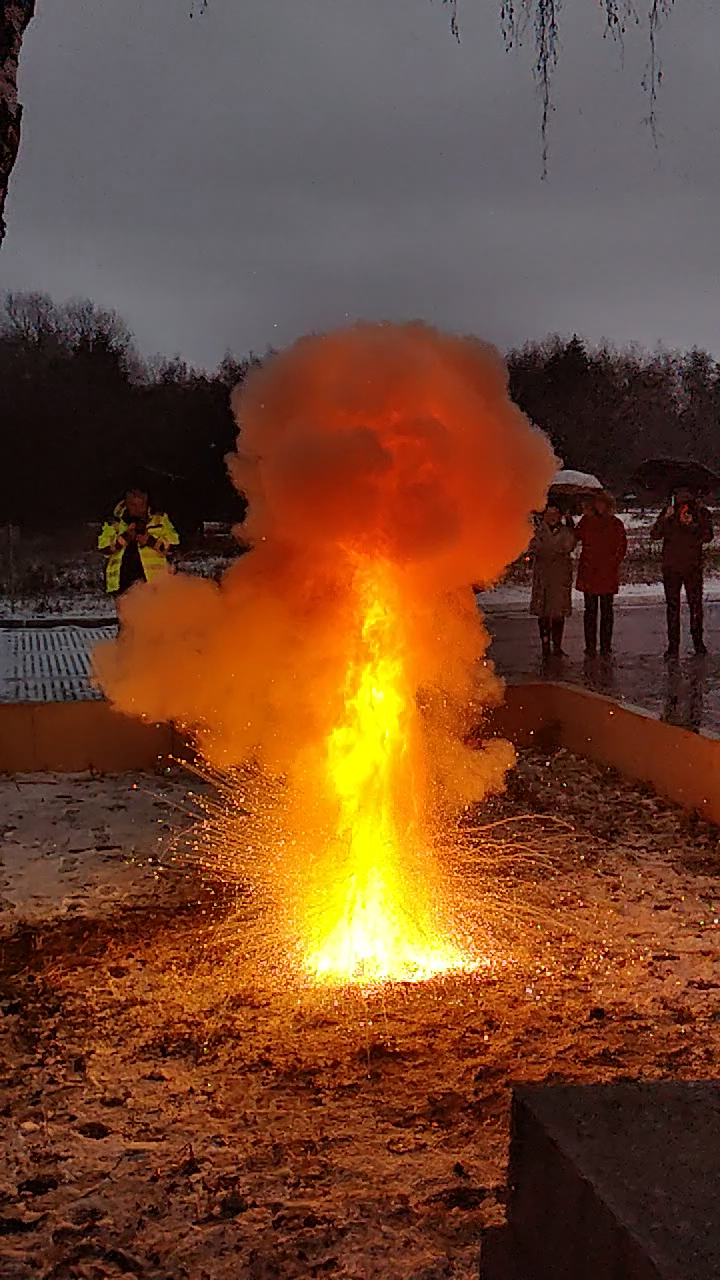Exploding batteries in sleet
Safety briefings are part of the routine at a research institute like the Max Planck Institute for the Science of Light (MPL). However, this changes when there is an experimental demonstration of what you should definitely not do - and what happens if you do. Dangerous goods officer Ralf Keding wanted to show how dangerous lithium batteries and accumulators can be and at the same time presented a new transport device that could be used to transport them more safely in the future.

Lithium accumulators and lithium metal batteries are practically ubiquitous and are used, stored and transported. As much as high energy density is desired during use, it is a hazard when it gets out of control. Typically, an accident involving Li batteries or accumulators is a fire. This is because the batteries and accumulators can spontaneously ignite. The big danger here is that such a fire does not need air to continue burning and is extremely hot, reaching up to 1600 degrees Celsius. Water as an extinguishing agent actually makes the fire worse.
Normally, an outdoor safety briefing in winter sleet would hardly generate enthusiasm. However, a demonstration of fire and explosion hazards is not an everyday occurrence, even at MPL, and given the temperatures and wet ground, the risk of the fire spreading is minimized. Safe is safe!
First, metallic sodium was demonstrated to burn in water. This behaves chemically similar to lithium. Then, discharged Li metal batteries were ignited in an open can. The reaction could be easily observed by all bystanders: little by little, the small batteries ignited, burst and burned in a shower of sparks. Lithium, which was thrown out of the can, burned for a short time. After that, some empty laptop batteries were also ignited in an open vessel. These batteries not only caught fire, they exploded with heavy smoke and sparks.
After the first part of the demonstration impressively showed the dangers of lithium batteries, the last test was for the transport container developed by Ralf Keding. For this purpose, laptop batteries were ignited in the special transport barrel. The transport barrel was filled in advance with magnesium oxide insulating fill and some lithium batteries. The aim was to test whether the magnesium oxide could mitigate the effects of spontaneous ignition. If so, the principle could be used during transport to prevent dangerous situations from occurring en route. It was also important to determine how much heat would be generated in the transport barrel. Because even if the fire would not have a direct impact on the surrounding area, the barrel would possibly become very hot. This was checked with heat indicator stickers. During the test, temperatures of 40-93°C were measured at the surface, which is a very good result. However, a flame also struck from the barrel, which was significantly hotter. Ralf Keding is nevertheless satisfied: "The experiment gave me more results than I had asked for. The outside temperature stayed below 100°C, which is already very good." He is confident that he will soon have solved the problem with the flame as well.
You can watch some of the demonstrations live here:
https://owncloud.gwdg.de/index.php/s/VC84p4fuQNNzOyx
https://owncloud.gwdg.de/index.php/s/eJ7A6I4XqzHyTXZ
Image (@MPL): Lithium batteries can spontaneously ignite and burn with temperatures up to 1600°C.
Contact
Edda Fischer
Head of Communication and Marketing
Phone: +49 (0)9131 7133 805
MPLpresse@mpl.mpg.de





